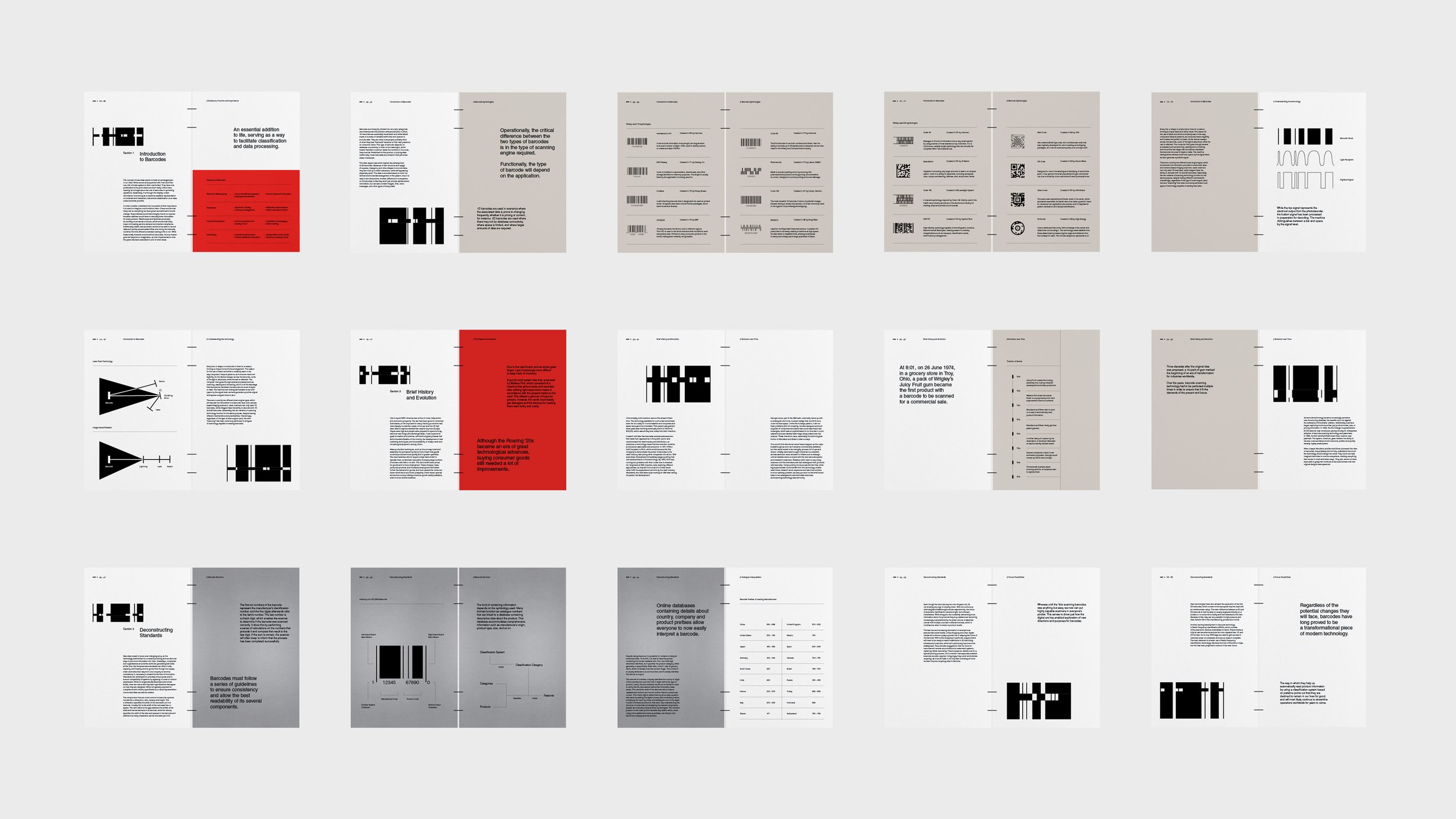The Book of Barcodes
Services
Research
Art Direction
Layout Design
Typography
Credits
Sandra Zellmer (Print Support)
Brian Smith (Copy)
This project received a commendation by the prestigious International Society of Typographic Designers.
Humans, by nature, are beings of organisation. We like to sort things out by categories and form systems to better understand the world around us. This project invites you to explore such systems through barcodes, a common but overlooked technology that shapes our society in more ways than we are aware of.
Behind the lines
The idea to research organisation came during the COVID-19 pandemic when the importance of logistics and technology became undeniable. Barcodes, a small but essential part of global supply chains, played a key role in keeping the world running in a time of crisis. This sparked an interest in understanding how they work, their impact and how they might influence future innovations, particularly in a post-pandemic world.
The mission
Highlight the significance of barcode technology in an increasingly data-driven society. Showcase history and potential future through storytelling and insightful research.
The challenge
Make data engaging and turn a seemingly boring topic into an interesting narrative. Distil complex technical information into a reader-friendly format by balancing simplicity and functionality.
The print-digital connection
Although fundamentally digital, barcodes are a bridge between the physical and the digital world, linking tangible products to data. I wanted to highlight that relationship by printing the book, while creating a moment of pause, inviting readers to reflect on how physical objects and the digital systems that organise them coexist and shape the future.
Code in style
The design reflects the simplicity of barcodes while visually engaging readers, making a technical topic accessible and thought-provoking. Each spread, much like barcodes, follows an adaptable and asymmetrical layout and plays around with contrast and light reflection. Additionally, the consensus on perfection and efficiency of Helvetica, much like its diverse use, go hand in hand with the standardisation of barcodes and their practical functionality.
















